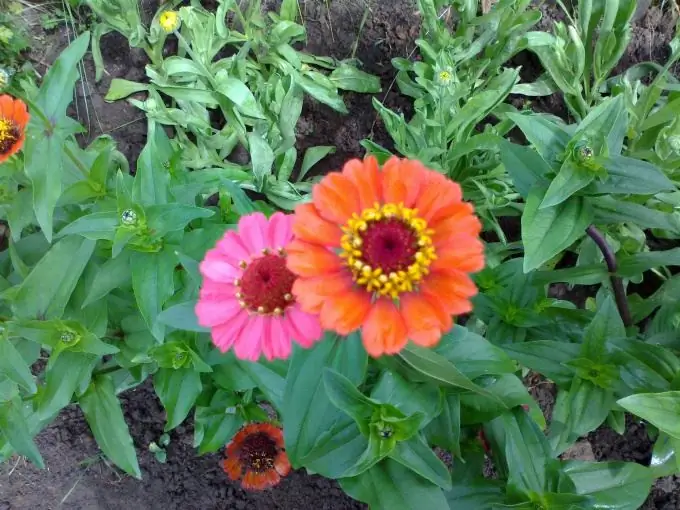Zinnia is one of the most beautiful, long-flowering and unpretentious plants. Blooms from June to late autumn. It pleases the eye with an abundance of forms and colors: among them there are dahlia, pompom, chrysanthemum varieties. Looks great both in flower beds and in compositions and bouquets.

Subject to the conditions and recommendations of the instructions, it is not difficult to grow zinnia. Even a novice florist can do this. The plant is light and heat-loving, so you need to choose an open, sunny area, but zinnia takes root in light partial shade. Needs fertile soil with a neutral reaction, regular watering in dry weather, fertilizing with complex mineral fertilizers. For high-quality growth and flowering, weeding and loosening of the soil are required.
Zinnia is usually grown in seedlings, but open field sowing is also possible. The first option will allow you to enjoy flowering already at the beginning of summer, and the second - only by the end of July.
It is advisable to sow seedlings before mid-April. Seedlings are picked after the appearance of two leaves. Seedlings need to be provided with daily watering, light and heat (the optimal room temperature should be above twenty degrees). It is recommended to plant in flower beds and flower beds only after the threat of frost has passed: in the last decade of May - early June. The distance between plants is maintained 15-40 centimeters, depending on the variety. The interval between dwarf varieties will be minimal, and tall species of seedlings will be separated by a distance of almost half a meter.
The second way of growing zinnia involves sowing seeds in open ground at the end of May, when the ground warms up. A place should be chosen well-lit by the sun, protected from the wind and with fertile soil. The depth of the seed is about one centimeter. To ensure a more lush flowering, the zinnia can be pinched before budding begins.






